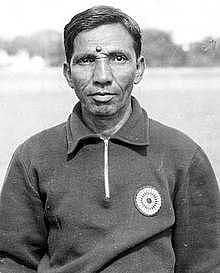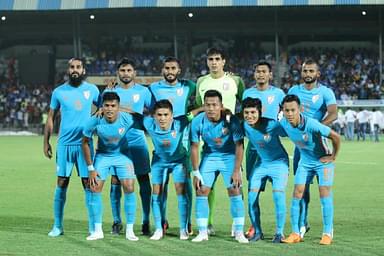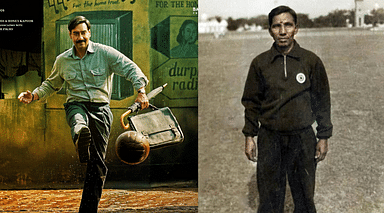This is the highest point the Indian fans have ever seen over the last decade as they prepare to watch their nation take up the field in the AFC Asian Cup, but the tri-color flag nation has achieved the major success under the management of Syed Abdul Rahim who is regarded as Architect of Modern Indian Football.
When he was at the helm, India were a major force in World football and made their name in some major tournaments. He was known for his motivation and his tenure as a coach of regarded as “Golden age” of Indian football.
Late Syed was born at Hyderabad in 1909, and he was a teacher by profession. He decided to switch his alliance to football when he saw the Indian footballers trying to unnecessarily dribble the ball too much, and brought up the concept of One-touch football.
During the training session, Rahim used to punish his players who try to carry the ball with their feet. A dribble in training session would be considered as a foul and free kick awarded says his son Syed Shahid Hakim.
Hearing his ideas and brilliant tactical astuteness, Hyderabad City Police Team were the first side to recruit him. He brought a lot of success to that side in the state level and in the national level which did not go unnoticed. The Indian football board were keen to follow his philosophy and hired him in 1950.
In the succeeding year, India were the hosts of the Asian Games in Delhi where he was able to reward his country with the Gold medal and Prime-Minister Jawaharlal Nehru watched the game from the stands congratulated the whole squad upon his win against Iran.
India have always been playing with their barefoot until they were humiliated 10-1 by Yugoslav side in cold conditions during 1952 Helinski Olympic games. It looked like the Indians have learned a lesson, and played with the shoes whenever they put on the shoes then after.
For whatever reason, Syed turned out to be a proper coach following that debacle in 1952. Winning a lot of International games and tournaments in the next four years, Rahim’s side looked to be among one of Asia’s best.

Beating the hosts in the Melbourne Olympics 1956, Indian Football Team stunned the world by overcoming the Aussies at their own patch in the Quarterfinals. However, they were knocked out by Hungary, one of the finest footballing nations in the next round. India finished fourth in this tournament, which is the highest point they have reached in their history till date.
Before the start of 1962 Asian games, India criticized Indonesia for taking part in the event after some political discrepancy. When they were present to take part in the Olympics, the team bus was pelted with stones and the whole stadium started booing when they took up the field.
Syed Abdul Rahim gathered his team before and after the match to sing the national anthem to remind their luck to represent the Indian team by battling out several others and install the hungriness to win the game more than the opponent.
The Indian team were in injury crisis before the finals against Korea. Defender Jarnail Singh, who netted a goal in the Semifinals has been forced to be sidelined with a deep laceration on the forehead.
Trilog Singh had a toe injury and the goalkeeper Peter Thangaraj was down with the flu. Ignoring their problems, they started the game for their nation. Opponents Korea were stunned by the exhilarating start of the Indians, scoring two goals in the first twenty minutes.
The game ended 2-1 and the party started in the Indian camp after the triumph, except for Trilog Singh when his wound got opened up later in the game. With this trophy, India lifted two Asian Cups in a span of eleven years. It was the pinnacle of the manager Syed Abdul Rahim’s career.
His health started deteriorating slowly after the Asian Cup. He ignored the problems to coach his nation, but he was forced to quit from that position two months later. He had cancer in his stomach which saw him bidding adieu to the world in 1963.
Following his death in 1963, Indian football has never been able to hit the same heights again. Football in Hyderabad mourned the death of the former Indian manager more than any other in the nation. A city that produced supreme talents vanished from the national scene in a few years time.



